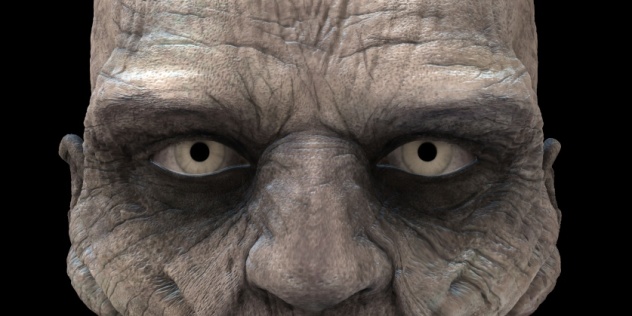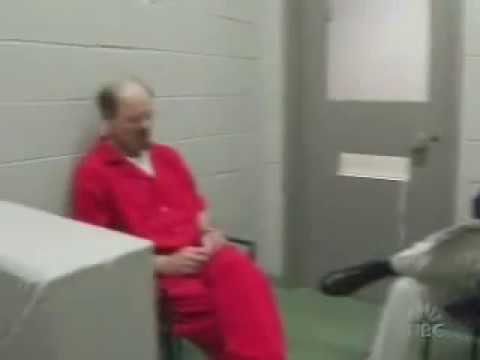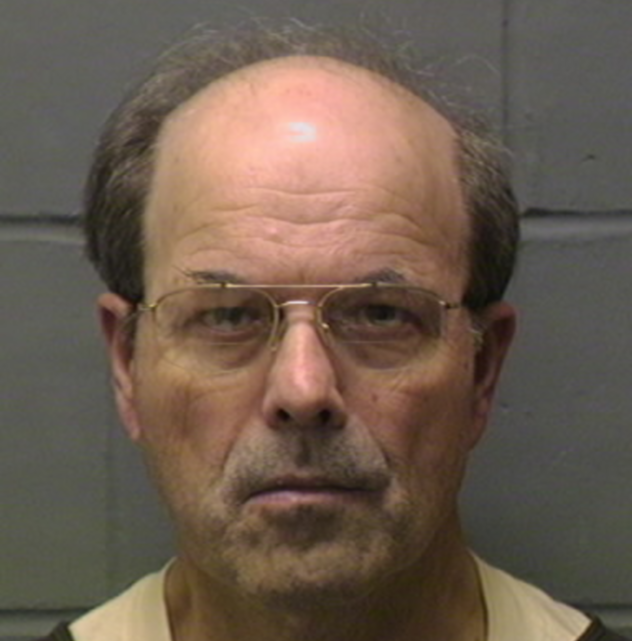10 The Oteros
When Dennis Rader first saw the Puerto Rican Otero family, he became transfixed. His main focus was on mom Julie Otero and her 11-year-old daughter, Josephine. Rader hatched a plan to attack on the morning of January 15, 1974 when only Julie, Josephine, and youngest son Joseph Jr. would be home. Rader was caught by surprise when he entered and found Joseph Otero, the family patriarch, still home. He managed to gain control of the situation, and in his settlement plea 31 years later, described in incredibly graphic detail how he bound, tortured, and killed the Otero family. What his confession did, however, was provide a unique look into the mind of a serial killer. Rader admitted that he was woefully unprepared for his crime. He didn’t know how much strength it took to take a human life, so his first attempt at strangling Julie Otero failed; she awoke while he was killing her son Joseph. Rader focused on Josephine, taking her into the basement, hanging her, and then ejaculating on her. It was that action that ultimately led to his arrest, as DNA matched a sample taken from Rader’s daughter in 2005 (more on her later), linking him to the crime.
9 Factor X
Rader had a reasoning behind his killing. One of the unique aspects of Rader’s crime spree was his enormous ego; he kept in contact with the press in the 1970s in an effort to spread fear throughout Wichita. In an early letter, he blamed “Factor X” as the motivation behind his murders. Rader fancied himself as an aficionado of serial killers and said that everyone from Jack The Ripper to Ted Bundy to the Son of Sam had the same Factor X. After his arrest, he narrowed down what Factor X was: a demon. In 2007, he described it being as something that “controls” his desire to kill. He’s even drawn it—depicting it in varying ways as a frog or as a more traditional-looking demon. It was Factor X that pushed him that fateful day, he claimed. “I knew somewhere along the line of eighth grade or freshman in high school that I had some abnormal tendencies at that point in time. But it exploded on January 15, 1974. That’s when the ball game exploded. You know, at some point in time, someone should have picked something up from me and identified it.”
8 He Reveled In The Terror
Part of Rader’s twisted game was the sexual thrill he got from striking terror. That’s why he kept in contact with the press; he enjoyed knowing that he was the reason that fear swept through Wichita in the 1970s. Rader chose his victims carefully, stalking them for days and weeks, learning their movements, their schedule, and then carefully planning his attack. In fact, he stalked many women, and if something didn’t work to his advantage, he moved on. Women came forward in 2005 convinced that they were stalked by BTK in the 1970s. No hit worked more perfectly for Rader than the murder of Nancy Fox. Rader noticed Fox leaving work one day. He followed her home and eventually obtained her name from her mailbox. From there he discovered exactly which store she worked at (a jewelry store), and studied her pattern. It was December 8, 1977 when he decided it was time to strike. He parked a few blocks away, confirmed she wasn’t home, and cut her phone line (a trademark BTK move) before breaking into her house. After Fox arrived home and Rader confronted her, she remained remarkably calm. He lied and said he was “just” going to rape her by tying her up, and she decided to just go with it. That was part of his MO: He told a few of his victims that he had a sexual problem and he needed to do some bondage sex with them. He became aroused when he revealed his ruse. Fox asked if she could use the bathroom before they just “get it over with.” Once she came out of the bathroom he handcuffed her, threw her on the bed, and strangled her. As she recovered after a pause, Rader later said that he whispered in her ear, telling her, ” ‘I was BTK, I was a bad guy.’ And then she really squirmed and then—I pulled—put the pressure down on it.” The excitement of her knowing his infamous identity was the thrill Rader seeked; after she died he masturbated on her. It was the Fox murder that led to a crucial clue. The murder went as well as Rader could have possibly planned, so he decided to announce it. He called the police to report, “You will find a homicide at 843 South Pershing. Nancy Fox.” His odd pronunciation of “homicide” (home-ah-side) was thought to be a clue, but in reality it was simply because Dennis Rader was a moron.
7 Dennis Rader Was Dumb
For a guy who fashioned himself as an evil genius killer terrorizing Wichita, Rader was pretty stupid. The 1977 pronunciation of “homicide” was seen as a clue, but it was only a clue to how dumb Rader was. His first communication to the press was so riddled with grammatical errors that most assumed it was done on purpose. It wasn’t. “I write this letter to you for the sake of the tax payer as well as your time. Those three dude you have in custody are just talking to get publicity for the Otero murders. They know nothing at all. I did it by myself and with no ones help. There has been no talk either. Let’s put this straight . . . ” That was Rader’s attempt to put forward his best grammar. Rader was a poor student in high school and college. He did eventually receive a degree from Wichita State, but it was when he was much older (and in his killing days). He once accidentally left a draft of a communication out for his wife to find. He explained it off as a writing experiment in one of his classes. Years later, after reading over a letter to one of his brothers, she noted, “You spell just like BTK.” No one ever put the two together despite the surprising fact that Rader didn’t try to hide his poor grammar when composing his BTK communications.
6 He Photographed His Victims
Rader wasn’t content to live out his sexual fantasies in the flesh. He also wanted to relive them by saving the moment through photographing some of his victims. This was speculated early in the investigation based on the positioning of the bodies, and after his arrest, the public had a chance to see the grotesque documentation. Rader photographed himself in various bondage positions, even storing some photographs in the basement of his church. In 1985, Rader broke into the home of Marine Hedge—who lived right down the road from his own home. After her male guest left for the evening, Rader crept out of her closet and flipped on her bedroom light. When she sat up in bed, he pounced on her and strangled her to death. He then placed her nude body in the trunk of her own car, drove to Christ Lutheran Church, of which he eventually became president, and photographed her in various sexual bondage positions. Upon his arrest, Rader still had every photo he’d taken at his crime scenes.
5 The One That Got Away
By 1978, Rader had an established pattern that was unfortunately very successful at terminating lives. He would stalk victims, learn their routine, and then carry out his kill. After his “success” in controlling the Nancy Fox murder, he stalked a recent widow, Anna Williams. In April, he decided it was time, and set out to strangle Anna Williams in her home. Rader arrived at the house in the evening, sneaked around the home to snip the phone line, and entered through a previously selected basement window. He quietly entered the home, and realized that Anna was not there. After ruffling through the home for mementos (he took trinkets from almost every victim) he decided to wait for her to arrive, and waited, and waited. At 10:00 PM, she still wasn’t home, and an enraged Rader left the home without satisfying his sexual fantasy. Once Williams did arrive home, hours after Rader left, she immediately knew something was amiss. A bedroom door was opened, and she was sure it was shut when she left. She picked up her phone to call the police, and there was no dial tone. She rushed out of the house to a neighbor’s and called the police. Upon a police inspection, a wire fashioned in the shape of a noose sat next to the bed. In a previous communication, BTK promised to hang his next victim. A few months after the Williams break-in, her daughter retrieved her mail from the home; Anna never stayed at the home again after the break-in. The letter addressed to Anna’s deceased husband c/o Anna had an official look to it, but inside was a pair of her pantyhose and a drawing of what Rader intended to do to Anna. “Oh Anna Why Didn’t You Appear?” was Rader’s poetic verse on how he intended to make Anna his eighth victim. The actual poem, which was not made public, was actually altered to “Anna,” the original typed title had the name “Louis.” He confirmed what everyone already thought; BTK was in Anna Williams’s home and a late night of square dancing saved her.
4 Location, Location, Location
The only good that came out of Rader’s heinous crimes was that his inflated ego made him talk in great detail about his methods. As we mentioned, Rader stalked people for a very long time and chose his victims carefully. It’s not a stretch to say that serial killers fall into the same pattern, and one aspect of his victims was crucial to his plan: where their homes were. When discussing the first crime, the Otero murders, Rader casually mentioned that the home was a corner house. By choosing a house with multiple exit points, Rader was facilitating his escape. Rader also worked for the alarm company ADT and had knowledge of how to defeat a home alarm. His job with ADT, and later as dog catcher for Park City, Kansas, gave him ample opportunity to drive around and scout locations for his murders. Rader’s second attempt at murder was almost his last. He stalked Kathryn Bright and chose her as his next victim. Unexpectedly, she arrived home with her brother Kevin as Rader waited for her. When Rader tried to strangle Kevin, he fought back fiercely, and Rader, in a panic, shot him. Rader then went after Kathryn, and she fought as well. Rader ended up stabbing her and shooting Kevin again after another struggle. This hit didn’t go as he planned and almost got Rader captured. However, by scouting the location, he was able to park only a block away. Rader picked her as a victim when he saw her leave her house. Her home fit his requirements in terms of access to an escape route. Kevin survived the shooting, but his sister Kathryn perished by Rader’s hands. Only an empty lot remains at 3217 East 13th St North, Wichita. It’s a corner lot.
3 His Laziness Did Him In
In 2004, lawyer Robert Beattie decided to write a book about the BTK killings. It had been 30 years since the initial slayings, and as far as the police knew the killings stopped in the late 1970s. Nightmare in Wichita would be his tribute to the victims, bringing a spotlight on long-forgotten crimes. On the other hand, there was no way Dennis Rader was going to let anyone but him tell his story. In March 2004, the Wichita Eagle received a letter from a Bill Thomas Killman, with a fake return address. Inside was a copy of a driver’s license of Vicki Wegerle and crime scene photos. When police arrived, Wegerle was still breathing, so she was rushed to the hospital; no crime scene photos were taken. BTK was Wegerle’s killer, almost nine years after his last known killing. It also confirmed what police believed: BTK photographed his victims. Rader wanted to control his story, and he wanted to tell his own version of events rather than let some two-bit lawyer cash in on his glory. Rader communicated with police and the media 11 times, with much to say. He wrote in book form, labeling the communications as “chapters”—in one he included a word puzzle which brazenly contained his last name “Rader” hidden in the letters. He felt bulletproof and wanted to get his story out, but one communication at a time was too daunting of a task. He figured it’d be a lot easier if he just put it on a floppy disk and mailed it. In the communication that facilitated his capture, the “Rice Krispies Box Communique,” he asked the police in a small note, “Can I communicate with Floppy and not be traced to a computer. Be honest.” The note asked for a classified ad to be placed if it was indeed untraceable. The police lied and answered in the affirmative predetermined code, “Rex, it will be OK.” Rader viewed himself as a genius and on equal footing with the authorities when he couldn’t have been further from it. At Christ Lutheran Church, Rader went to the pastor and told him he had minutes to run off for a meeting. Instead he inserted the disk into the church computer and printed documents to accompany the disk in the mail, not knowing that the disk would be embedded with the username of the writer, Dennis, and the location of the computer. The metadata showed that the disk had been saved at the Park City Library & Christ Lutheran Church. A basic Internet search found Dennis Rader as the President of Christ Lutheran Church. He made two mistakes: taking the disk to the Church and not understanding that nothing is truly deleted from a disk or computer, ever. On February 25, 2005, on his way home for lunch, Rader noticed a long line of police cars, and he immediately knew he was done playing his game. Once in custody, he was more offended for the betrayal. He asked, “How come you lied to me?” Police Lt. Ken Lendwehr replied, “Because I was trying to catch you.”
2 BTK’s Daughter
Authorities already had circumstantial evidence identifying Dennis Rader as BTK. In one of his communications in 2004, he left a Rice Krispies box at a Home Depot. Security cameras facing the parking lot noticed a vehicle circling the lot, and stopping briefly. Police identified that vehicle as belonging to Dennis Rader. With his vehicle and floppy disk, the police felt confident that they would obtain a DNA sample. Rader masturbated at practically every crime scene, and even though DNA evidence didn’t exist in the 1970s, police carefully saved samples from all the scenes. In early 2005, police retrieved DNA from Kerri Rawson, the married daughter of Dennis Rader. The Rader family, his wife and two children, refused any media requests for years, naturally. Rader’s wife Paula was granted an emergency divorce while Dennis was in jail, and his children had no desire to recount their lives. In 2014, daughter Kerri finally told her story. The thing that got to her was the murder of Nancy Fox. She realized that her mother was three months pregnant with her while her father was taking Fox’s life. Kerri decided to comment after learning of a story by Stephen King, The Good Wife, that clearly is inspired by the BTK crimes, complete with a wife not knowing about her husband’s double life. The juxtaposition of her own life still gets to Kerri. “You are alive. There is almost a guilt there, for being alive. They died. And you got to live. And my dad got to walk me down the aisle at my wedding. He should have been in prison in 1974. He shouldn’t have gotten the right to raise us. Other people got their daughters taken away from them.” In an episode none too ironic to her, she lost her faith after the deaths of friends in 1992. Years later, a harrowing hiking adventure scared her, and it was her father that encouraged her to pray for strength. After she made it out, she found religion again. It was death that made her lose her faith and her father’s compassion that regained it.
1 BTK Wants To Help His Victim’s Families
Dennis Rader is a coward and a vicious killer; there’s no doubt about that. He ruined the 10 lives he took and did untold damage to the surviving members of their families. Charlie Otero, the eldest Otero child, suffered greatly at the loss of his parents and two youngest siblings. He arrived home shortly after his two other siblings discovered the gruesome crime scene. Charlie’s life ended that day for all intents and purposes—he lost his faith, he lost his desire to achieve his career goals (Wichita State and a career in the Air Force, like his father), and became obsessed with finding out who killed his father. He didn’t learn until much later they were the victims of a serial killer; he believed his father did clandestine work for the government and it was a retaliatory strike. Rader can’t bring back the Oteros but in his own way he’s trying to make amends. Rader agreed to facilitate a book about the crimes. This could obviously be an attempt to control the situation again, as Rader tried to do in 2004 when learning of a book, but he’s saying the right things when asked about his participation. “I can never replace their love ones, my deeds too ‘dark’ to understand, the book or movies, etc. is the only way to help them . . . People like me, need to be under stood, so the criminal professional field, can better under stand, the criminal mind. That would be my way helping debt to society.” A portion of the proceeds will go to a victims’ fund, in an effort to financially assist the families all these years later. No amount of money can replace lost lives, though. In 2005, Jeff Davis, son of 1991 victim Dee Davis (BTK’s last victim) said, “he’s not human and has no soul or conscience . . . just a black hole inside the shell of a human being.” Given Dennis Rader’s history, his gleeful retelling of the crimes in court, and his memorabilia taken from victims, how much of this is giving back to victims’ families and how much is just reliving his crimes? Jake wrote a trivia e-book filled with crazy stuff like the kind you just read in this list. You can follow him on Twitter for more useless facts.
























